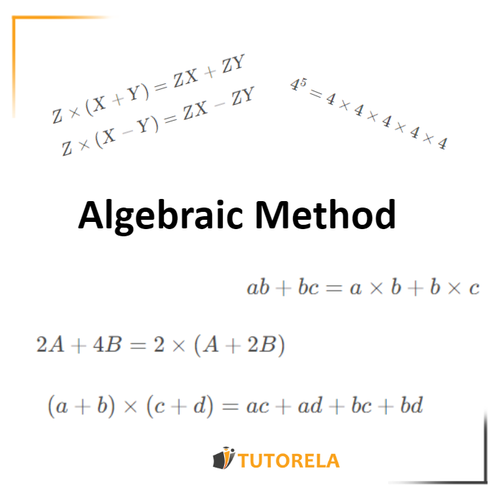Algebraic Method
Algebraic Method is a general term for various tools and techniques that will help us solve more complex exercises in the future. It is mostly concern about using algebraic operations to isolate variables and solve equations. This approach is fundamental for solving equations in various mathematical contexts.
Distributive Property
This property helps us to clear parentheses and assists us with more complex calculations. Let's remember how it works. Generally, we will write it like this:
Extended Distributive Property
The extended distributive property is very similar to the distributive property, but it allows us to solve exercises with expressions in parentheses that are multiplied by other expressions in parentheses.
It looks like this:
Factoring
The factoring method is very important. It will help us move from an expression with several terms to one that includes only one by taking out the common factor from within the parentheses.
For example:
This expression consists of two terms. We can factor it by reducin by the greatest common factor. In this case, it's the .
We will write it as follows:

In this article, we’ll explain each of these topics in detail, But each of these topics will be explained even more in detail in their respective articles.